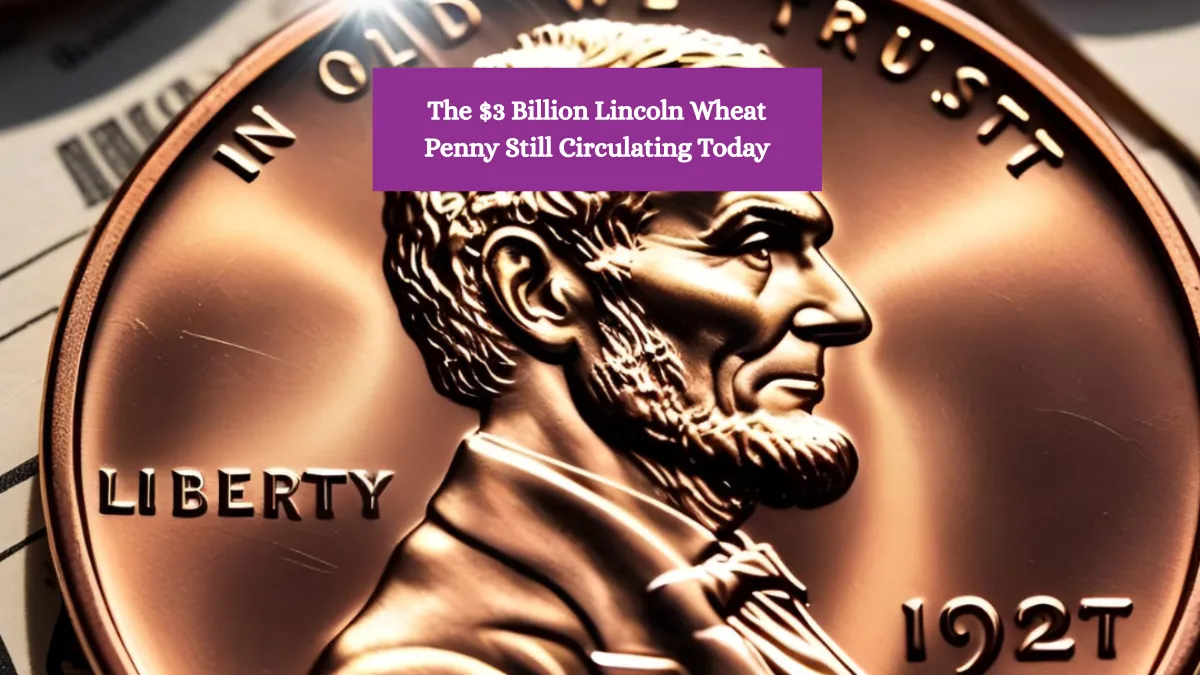When it comes to rare and valuable coins, few are as iconic and mysterious as the Lincoln Wheat Penny. Collectors and enthusiasts have long searched their pockets, piggy banks, and old jars for one of these treasured coins. But one story continues to stun even the most seasoned numismatists—a Lincoln Wheat Penny rumored to be worth $3 billion, still in circulation today. Yes, you read that right. A single coin, originally worth just one cent, now potentially valued in the billions.
The Origin of the Lincoln Wheat Penny
The Lincoln Wheat Penny, also called the “Wheat Cent,” was minted from 1909 to 1958. It was the first U.S. coin to feature the likeness of a real person—President Abraham Lincoln—on its face. Designed by Victor D. Brenner, the coin was introduced in honor of Lincoln’s 100th birthday.
On the reverse side, it featured two stylized wheat ears, symbolizing prosperity and national growth. These coins were mostly made from 95% copper and 5% tin and zinc, although wartime years like 1943 introduced alternative materials like steel due to copper shortages.
Why Some Lincoln Wheat Pennies Are Extremely Valuable
Most Wheat Pennies are only worth a few cents over face value, but certain error coins, rare mint years, and unique conditions can cause their prices to skyrocket. The key factors that make a Lincoln Wheat Penny valuable include:
- Minting Errors (such as double dies or off-center strikes)
- Low Mintage Numbers
- High Grades (mint condition)
- Historical Significance
The more unique a coin is, the more it attracts collectors—and the more a bidding war can drive its price up to astronomical levels.
The $3 Billion Penny: What We Know
The claim of a Lincoln Wheat Penny being worth $3 billion might sound outrageous, but the origins of this story lie in numismatic folklore, where reality and myth often blend. According to coin experts and viral online stories, this elusive penny is believed to be:
- A 1943 Bronze Lincoln Wheat Penny
- Minted by mistake when copper planchets (coin blanks) were accidentally used instead of zinc-coated steel
- Possibly minted at the Denver or San Francisco mint
- In mint state condition, never circulated or barely touched
While no officially documented sale has ever reached $3 billion, the coin in question is theoretically valued that high due to:
- Extreme rarity (only a handful exist)
- Mythic status
- Private collectors with limitless budgets
One such 1943 bronze penny sold for $1.7 million in 2010, which gives credence to the idea that if an even rarer or better-condition version were found today, bidding could reach into the billions.
Still in Circulation? It’s Possible
You might think a coin like this would be in a museum or vault, but that’s what makes this story so fascinating. Some experts believe that a few of these rare pennies slipped into general circulation unknowingly and were never recovered. This opens the possibility that one could still be hiding in a change jar, stuck in a couch cushion, or even passed along during a regular grocery transaction.
Coin roll hunters, who sort through rolls of pennies from banks, often dream of finding this legendary coin. Stories from people finding rare pennies at garage sales, thrift stores, and flea markets continue to keep hope alive.
How to Identify the Rare 1943 Bronze Wheat Penny
If you want to join the hunt, here’s what you should look for:
- Year: 1943
- Material: Copper/Bronze, not steel (use a magnet—steel will stick, bronze won’t)
- Color: Reddish-brown hue, not gray or silver
- Mint Mark: Look for a small “D” or “S” below the date
- Weight: Should weigh around 3.11 grams (steel pennies weigh about 2.7 grams)
If you believe you’ve found one, do not clean it. Cleaning can reduce the value dramatically. Instead, have it verified by a certified coin grading service like PCGS or NGC.
Why the Hype Won’t Die
The idea that a $3 billion penny might still be floating in everyday circulation captures the imagination like few other stories in numismatics. It combines the allure of hidden treasure with historical fascination, and for many people, it’s a symbol of the “American Dream”—that something as ordinary as a penny could change a life overnight.
Additionally, online stories, YouTube videos, and viral TikToks keep the legend alive. Whether or not such a coin truly exists in circulation remains to be seen, but it undeniably keeps collectors, both amateur and professional, checking their change.
The Bottom Line
While the $3 billion valuation may seem exaggerated, the possibility of finding a multi-million-dollar Lincoln Wheat Penny is very real. Coins like the 1943 bronze Wheat Penny are confirmed to exist and have sold for eye-popping sums. Whether one is still in circulation is up for debate, but the thrill of the hunt is what keeps this story so compelling. So next time you get pennies back from a store, take a closer look—because that ordinary-looking coin might just make you a billionaire.
FAQs
Q1: How can I tell if I have the rare 1943 bronze Lincoln penny?
Use a magnet—steel pennies stick, bronze ones don’t. Check the weight (around 3.11 grams) and look for a reddish tone.
Q2: Is it legal to sell a $3 billion penny if I find one?
Yes, it’s legal to own and sell rare U.S. coins, including valuable pennies, to private collectors or at auctions.
Q3: Where can I get a rare penny verified?
You can use professional grading services like PCGS (Professional Coin Grading Service) or NGC (Numismatic Guaranty Company).
Q4: Are there other Lincoln Wheat Pennies worth money?
Absolutely! Pennies from 1909-S VDB, 1914-D, and 1922 no D are also highly valuable to collectors.
